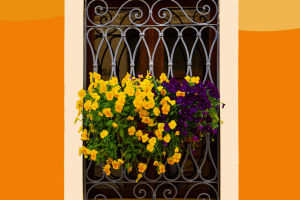Many people often struggle with whether to install a bathtub or a shower enclosure when renovating. Both bathtubs and showers have advantages, and there is no good or bad.
Today, we will analyze the pros and cons from multiple perspectives to help everyone make the best choice.
1. Based on Space Size
If there are two bathrooms, a bathtub can be installed in the main bathroom, while a shower enclosure can be set up in the secondary one. If there is only one bathroom and the space is limited, it is recommended to install a shower enclosure as it is more sleek and convenient.
2. Based on the Owner's Diligence
Homeowners who enjoy tidying up regularly may opt for a bathtub.
For those who are not fond of fuss and may suffer from "lazyitis," it's better to stick with a shower enclosure. Since bathtubs come into direct contact with the body, they require regular cleaning and disinfection. If one is reluctant to tidy up, it could quickly become unused space in the home.
3. Based on Family Member Types
3.1. Single Women
Bathtubs are a favorite among women for cleansing purposes and skincare routines like milk baths, floral baths, and aromatherapy baths. So, for single women, installing a bathtub at home would be more practical than a shower enclosure in terms of comfort.
3.2. Couples
With the addition of petals and aromas, bathtubs can create a very romantic ambiance. For couples, it's recommended to design a combined bathtub and shower enclosure setup. This way, it can satisfy the man's preference for showering while catering to the woman's desire for a relaxing bath.
3.3. Families with Toddlers
For families with children, if space allows, it's still advisable to have a bathtub. This makes it more convenient to bathe the children. Moreover, children enjoy playing with water, so having a bathtub at home can provide them with an excellent recreational space.
3.4. Multigenerational Families
For households with both elderly and young members, it's advisable to design separate bathtub and shower enclosure setups.
The depth of the bathtub should be chosen according to the height of older people. The shower enclosure should also have anti-slip features and preferably have handrails and seating inside.
4. Sustainability
Water management is a key factor in sustainable development.
Comparing the water usage of showers and baths reveals a significant difference. A standard bathtub uses about 80 liters of water, while an 8-minute shower consumes approximately 62 liters. Therefore, showers are not only more economical but also more environmentally friendly.
Although shower technology often involves introducing smart devices in water control systems, reusing greywater from bathtubs is becoming increasingly popular. This practice can be done through manual management or by installing a separate tank to provide clean water for reuse.
Innovation
Why not have both showers and baths?
Innovative strategies now combine these options into comprehensive bathroom systems. Integrating new technology and bathroom elements allows people to choose which function to use or enjoy both experiences in the same space.
Combining efficiency and innovation, the integration of bathtubs and showers can create a design that is ergonomic and tailored to human needs.


